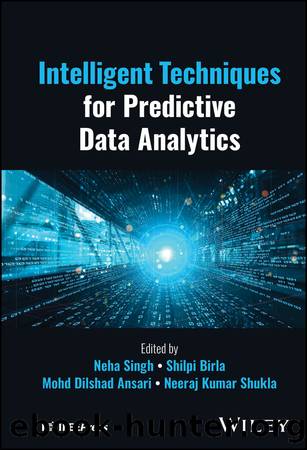Intelligent Techniques for Predictive Data Analytics by unknow

Author:unknow
Language: eng
Format: epub
Tags: Computers, Data Science, General, Data Analytics, Data Modeling & Design, Mathematics, Probability & Statistics, Stochastic Processes
ISBN: 9781394227976
Google: 1gcQEQAAQBAJ
Publisher: John Wiley & Sons
Published: 2024-06-20T22:00:00+00:00
Figure 6.3 Smart mobile robot.
Source: Lee et al. [11]/with permission of IEEE.
Chiang et al. [12] proposed a smart supermarket trolley that included a face recognition feature for store customers. The customers are also assisted with product recommendations based on their history of purchases. In this way, buying efficiency can be increased even further, and shopping time can be minimized. The algorithms for cart navigation and face recognition, on the contrary, are extremely complicated.
Wu et al. [13] suggested the concept of an intelligent shopping assistant system (ISAS) that could recognize and navigate the trolley consistently. Customers can see their shopping list and guide the shopping trolley to get items with this modelâs additional app functionality. Customers can see their shopping list and direct the shopping trolley to get products using the app which is also an additional feature of this app. Product suggestions and discount details are also included in the app. This model has the benefit of providing a handsâfree shopping experience for the least amount of time spent at the shopping mall.
In 2018, Sarala et al. [29] designed a smart electronic trolley for shopping malls to reduce the time to purchase products. The barcode scanner on the electronic trolley scans the results to identify the items and connects to the shop's server over the Internet. In addition, it includes LCDs that inform customers of the number of items and their total cost and a barcode scanner that determines the result and updates the bill. A swiping machine is available so that customers can pay their bills using credit or debit cards.
Keerthana et al. [30] developed a system in which visually impaired people can enjoy their shopping experience and purchase the products they want. A specific personal gadget was designed for the identification of products and navigation. This project demonstrates how wireless personal gadgets are used in everyday life. It provides visually impaired people with a smart environment by using RFID and Zigbee technologies. The developed product enables visually impaired people to shop independently and not depend on others. You do not need any special training to use it, it is easy to use, and it is economical. The fully automated product overcomes the hesitation of purchasing their shopping needs and gives them confidence.
Devipriya et al. [31] stated that to enhance the quality of life for visually impaired and blind people, many methods have been proposed to date. However, purchasing products in a supermarket without others' assistance is still a big challenge for them. The purpose of this chapter is to propose a smart store assistant for visually impaired people. The assistant addresses three major concerns, namely, finding the product, identifying the product, and purchasing the product. The system has three modules: product identifier, smart glove, and smart trolley. RFID is used to identify products in the product identifier module. By scanning the product with the smart glove, the buyer receives audio instructions that explain the product specifications. As soon as the product is added to the cart, an automated billing system provides a final bill for the purchased products.
Download
This site does not store any files on its server. We only index and link to content provided by other sites. Please contact the content providers to delete copyright contents if any and email us, we'll remove relevant links or contents immediately.
| Computer Vision & Pattern Recognition | Expert Systems |
| Intelligence & Semantics | Machine Theory |
| Natural Language Processing | Neural Networks |
Algorithms of the Intelligent Web by Haralambos Marmanis;Dmitry Babenko(16235)
Jquery UI in Action : Master the concepts Of Jquery UI: A Step By Step Approach by ANMOL GOYAL(9387)
Test-Driven Development with Java by Alan Mellor(7735)
Data Augmentation with Python by Duc Haba(7609)
Principles of Data Fabric by Sonia Mezzetta(7378)
Learn Blender Simulations the Right Way by Stephen Pearson(7294)
Microservices with Spring Boot 3 and Spring Cloud by Magnus Larsson(7137)
Hadoop in Practice by Alex Holmes(6587)
RPA Solution Architect's Handbook by Sachin Sahgal(6517)
The Infinite Retina by Robert Scoble Irena Cronin(6216)
Big Data Analysis with Python by Ivan Marin(5934)
Life 3.0: Being Human in the Age of Artificial Intelligence by Tegmark Max(5516)
Pretrain Vision and Large Language Models in Python by Emily Webber(4894)
Infrastructure as Code for Beginners by Russ McKendrick(4653)
Functional Programming in JavaScript by Mantyla Dan(4436)
WordPress Plugin Development Cookbook by Yannick Lefebvre(4382)
The Age of Surveillance Capitalism by Shoshana Zuboff(4247)
Embracing Microservices Design by Ovais Mehboob Ahmed Khan Nabil Siddiqui and Timothy Oleson(4148)
Applied Machine Learning for Healthcare and Life Sciences Using AWS by Ujjwal Ratan(4135)
